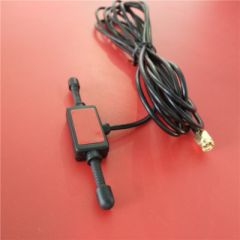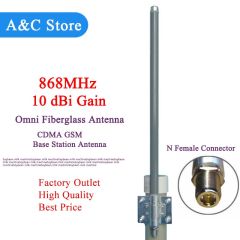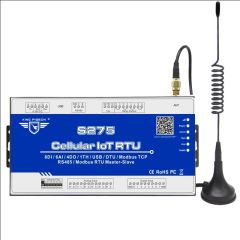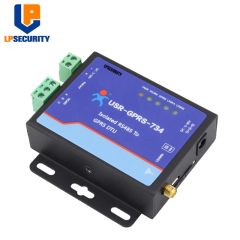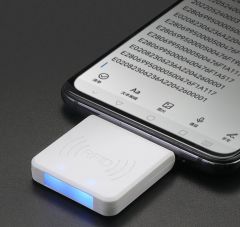RFID & Security Warehouse - Expertise in RFID, Physical Security, e-Commerce and Information Technologies for Business
Summary
RFID & Security Warehouse is a company that focus in a variety of business process automation using information technologies. We have acquired certifications from GS1, Cisco, Google and ASIS. Our major expertise include RFID, Physical Security, e-Commerce, Web-based business solutions, Internet Marketing. We are more at the side of solution design and software development, while we have established a good network of manufacturers they are providing us with high quality equipment working with our software. Now we have presences in Hong Kong, China Shenzhen and Taiwan Kaohsiung. We are serving clients from worldwide.
Keywords: RFID, Ultra-high Frequency, UHF, HF, LF, reader, writer, tags, portable, destktop, handheld, TCP/IP, Wifi , EPC, Android, Windows, Ubuntu, web-based, asset management, security, cctv, access control, internet of things, beacon
More about RFID & Security Warehouse
RFID & Security Warehouse is a brand name for our small and medium sized company that focus in a variety of business process automation using information technologies. It is established in the year of 2000. During the past 10+ years, we have developed many solutions for our business clients. Our major expertise include RFID, Physical Security, e-Commerce, Web-based business solutions, Internet Marketing. We are more at the side of solution design and software development, while we have established a good network of manufacturers they are providing us with high quality equipment working with our software. We have thousands products on list to fulfill every unique need of your business. We have acquired certifications from well recognized industrial organizations including GS1, Cisco, Google and ASIS. Now we have presences in Hong Kong, China Shenzhen and Taiwan Kaohsiung. We are serving clients from worldwide.
About the RFID and Security Warehouse Products and Solutions
RFID and Security Warehouse focuses in RFID and physical security solutions for business. RFID and Security Warehouse has extensive experience in designing and providing services to a variety of business. RFID has very wide range of applications for different industries. One of the popular and general RFID applications is RFID-based asset management system.

Some Basic Information about RFID
RFID systems can be broken down by the frequency band within which they operate: low frequency, high frequency, and ultra-high frequency. There are also two broad categories of RFID systems-passive and active. In the sections below we will explore the frequencies and types of RFID systems.
RFID Frequencies
Frequency refers to the size of the radio waves used to communicate between RFID system components. RFID systems throughout the world operate in low frequency (LF), high frequency (HF) and ultra-high frequency (UHF) bands. Radio waves behave differently at each of these frequencies with advantages and disadvantages associated with using each frequency band.
If an RFID system operates at a lower frequency, it has a shorter read range and slower data read rate, but increased capabilities for reading near or on metal or liquid surfaces. If a system operates at a higher frequency, it generally has faster data transfer rates and longer read ranges than lower frequency systems, but more sensitivity to radio wave interference caused by liquids and metals in the environment.
LF RFID
The LF band covers frequencies from 30 KHz to 300 KHz. Typically LF RFID systems operate at 125 KHz, although there are some that operate at 134 KHz. This frequency band provides a short read range of 10 cm, and has slower read speed than the higher frequencies, but is not very sensitive to radio wave interference.
LF RFID applications include access control and livestock tracking.
Standards for LF animal-tracking systems are defined in ISO 14223, and ISO/IEC 18000-2. The LF spectrum is not considered a truly global application because of slight differences in frequency and power levels throughout the world.
HF RFID
The HF band ranges from 3 to 30 MHz. Most HF RFID systems operate at 13.56 MHz with read ranges between 10 cm and 1 m. HF systems experience moderate sensitivity to interference.
HF RFID is commonly used for ticketing, payment, and data transfer applications.
There are several HF RFID standards in place, such as the ISO 15693 standard for tracking items, and the ECMA-340 and ISO/IEC 18092 standards for Near Field Communication (NFC), a shortrange technology that is commonly used for data exchange between devices. Other HF standards include the ISO/IEC 14443 A and ISO/IEC 14443 standards for MIFARE technology, which used in smart cards and proximity cards, and the JIS X 6319-4 for FeliCa, which is a smart card system commonly used in electronic money cards.
UHF RFID
The UHF frequency band covers the range from 300 MHz to 3 GHz. Systems complying with the UHF Gen2 standard for RFID use the 860 to 960 MHz band. While there is some variance in frequency from region to region, UHF Gen2 RFID systems in most countries operate between 900 and 915 MHz.
The read range of passive UHF systems can be as long as 12 m, and UHF RFID has a faster data transfer rate than LF or HF. UHF RFID is the most sensitive to interference, but many UHF product manufacturers have found ways of designing tags, antennas, and readers to keep performance high even in difficult environments. Passive UHF tags are easier and cheaper to manufacture than LF and HF tags.
UHF RFID is used in a wide variety of applications, ranging from retail inventory management, to pharmaceutical anti-counterfeiting, to wireless device configuration. The bulk of new RFID projects are using UHF opposed to LF or HF, making UHF the fastest growing segment of the RFID market.
The UHF frequency band is regulated by a single global standard called the ECPglobal Gen2 (ISO 18000-6C) UHF standard.
UHF
|
HF and LF
|
Passive, Active, and BAP RFID Systems
Active RFID Systems
In active RFID systems, tags have their own transmitter and power source. Usually, the power source is a battery. Active tags broadcast their own signal to transmit the information stored on their microchips.
Active RFID systems typically operate in the ultra-high frequency (UHF) band and offer a range of up to 100 m. In general, active tags are used on large objects, such as rail cars, big reusable containers, and other assets that need to be tracked over long distances.
There are two main types of active tags: transponders and beacons. Transponders are “woken up” when they receive a radio signal from a reader, and then power on and respond by transmitting a signal back. Because transponders do not actively radiate radio waves until they receive a reader signal, they conserve battery life.
Beacons are used in most real-time locating systems (RTLS), in order to track the precise location of an asset continuously. Unlike transponders, beacons are not powered on by the reader’s signal. Instead, they emit signals at pre-set intervals. Depending on the level of locating accuracy required, beacons can be set to emit signals every few seconds, or once a day. Each beacon’s signal is received by reader antennas that are positioned around the perimeter of the area being monitored, and communicates the tag’s ID information and position.
Passive RFID Systems
In passive RFID systems, the reader and reader antenna send a radio signal to the tag. The RFID tag then uses the transmitted signal to power on, and reflect energy back to the reader.
Passive RFID systems can operate in the low frequency (LF), high frequency (HF) or ultra-high frequency (UHF) radio bands. As passive system ranges are limited by the power of the tag’s backscatter (the radio signal reflected from the tag back to the reader), they are typically less than 10 m. Because passive tags do not require a power source or transmitter, and only require a tag chip and antenna, they are cheaper, smaller, and easier to manufacture than active tags.
Passive tags can be packaged in many different ways, depending on the specific RFID application requirements. For instance, they may be mounted on a substrate, or sandwiched between an adhesive layer and a paper label to create smart RFID labels. Passive tags may also be embedded in a variety of devices or packages to make the tag resistant to extreme temperatures or harsh chemicals.
Passive RFID solutions are useful for many applications, and are commonly deployed to track goods in the supply chain, to inventory assets in the retail industry, to authenticate products such as pharmaceuticals, and to embed RFID capability in a variety of devices. Passive RFID can even be used in warehouses and distribution centers, in spite of its shorter range, by setting up readers at choke points to monitor asset movement.
Battery-Assisted Passive (BAP) Systems
A Battery-Assisted Passive RFID tag is a type of passive tag which incorporates a crucial active tag feature. While most passive RFID tags use the energy from the RFID reader’s signal to power on the tag’s chip and backscatter to the reader, BAP tags use an integrated power source (usually a battery) to power on the chip, so all of the captured energy from the reader can be used for backscatter. Unlike transponders, BAP tags do not have their own transmitters.
| Active RFID | Passive RFID | Battery-Assisted Passive (BAP) | |
|---|---|---|---|
| Tag Power Source | Internal to tag | Energy transfer from the reader via RF | Tag uses internal power source to power on, and energy transferred from the reader via RF to backscatter |
| Tag Battery | Yes | No | Yes |
| Availability of Tag Power | Continuous | Only within field of reader | Only within field of reader |
| Required Signal Strength from Reader to Tag | Very Low | Very high (must power the tag) | Moderate (does not need to power tag, but must power backscatter) |
| Available Signal Strength from Tag to Reader | High | Very Low | Moderate |
| Communication Range | Long Range (100m or more) | Short range (up to 10m) | Moderate range (up to 100m) |
| Sensor Capability | Ability to continuously monitor and record sensor input | Ability to read and transfer sensor values only when tag is powered by reader | Ability to read and transfer sensor values only when tag receives RF signal from reader |
Welcome contact us for more information:
- Company: RFID and Security Warehouse
- Contact Person: Dennis Chan
- Position: Consultant
- Phone Number: +1 347-4484457
- Email: dennis@security-warehouse.com
